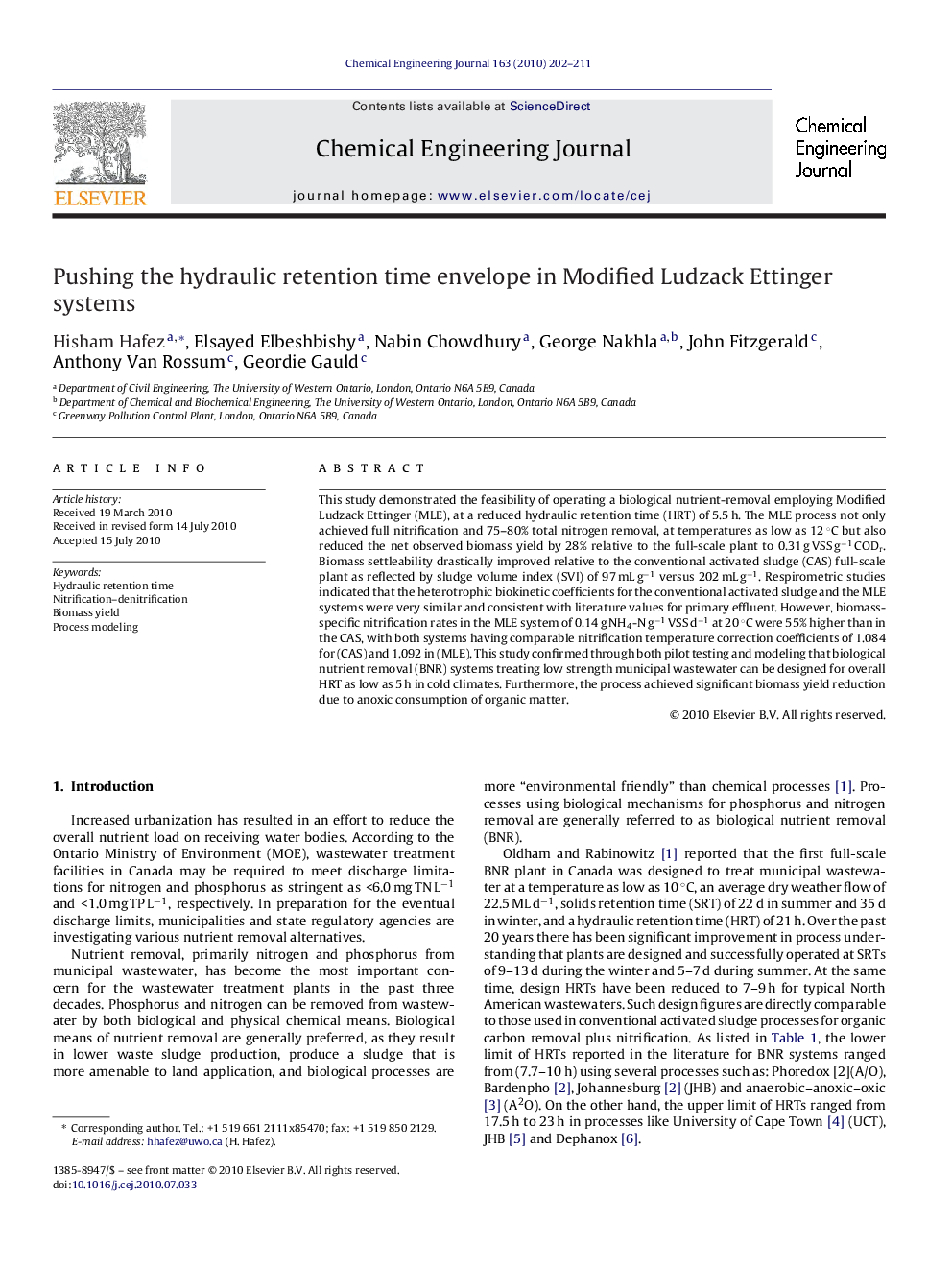| Article ID | Journal | Published Year | Pages | File Type |
|---|---|---|---|---|
| 151958 | Chemical Engineering Journal | 2010 | 10 Pages |
This study demonstrated the feasibility of operating a biological nutrient-removal employing Modified Ludzack Ettinger (MLE), at a reduced hydraulic retention time (HRT) of 5.5 h. The MLE process not only achieved full nitrification and 75–80% total nitrogen removal, at temperatures as low as 12 °C but also reduced the net observed biomass yield by 28% relative to the full-scale plant to 0.31 g VSS g−1 CODr. Biomass settleability drastically improved relative to the conventional activated sludge (CAS) full-scale plant as reflected by sludge volume index (SVI) of 97 mL g−1 versus 202 mL g−1. Respirometric studies indicated that the heterotrophic biokinetic coefficients for the conventional activated sludge and the MLE systems were very similar and consistent with literature values for primary effluent. However, biomass-specific nitrification rates in the MLE system of 0.14 g NH4-N g−1 VSS d−1 at 20 °C were 55% higher than in the CAS, with both systems having comparable nitrification temperature correction coefficients of 1.084 for (CAS) and 1.092 in (MLE). This study confirmed through both pilot testing and modeling that biological nutrient removal (BNR) systems treating low strength municipal wastewater can be designed for overall HRT as low as 5 h in cold climates. Furthermore, the process achieved significant biomass yield reduction due to anoxic consumption of organic matter.
